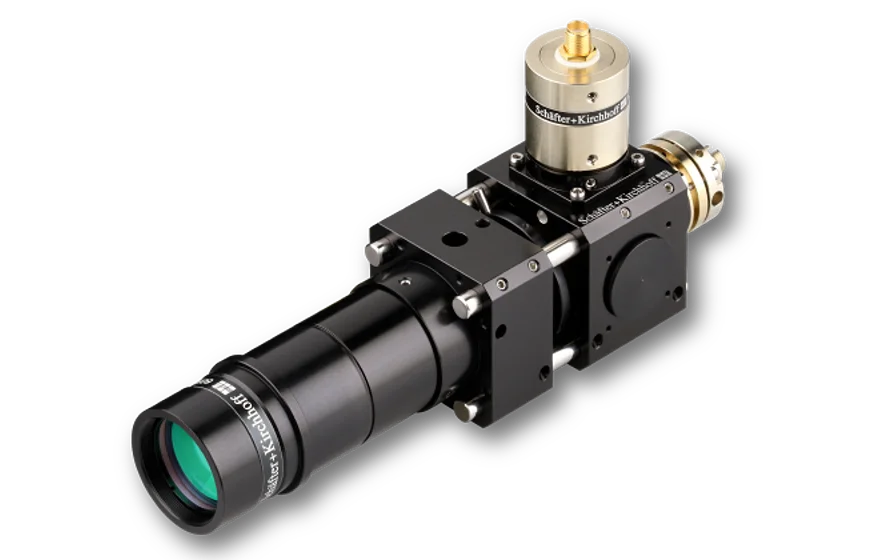The fiber collimators of series 60FC-PD-Q have an integrated power monitor and additionally have an integrated quarter-wave plate in order to generate a circular state of polarization.
An optics for each application
A large variety of optical designs allows that the optimum focal lengths can be selected for each application. All lenses are AR-coated.
Optical design
The radiation of a polarization-maintaining input fiber is collimated to a beam with a diameter in the range Ø 1 - 4 mm. A polarizer suppresses radiation guided falsely in the fast axis of the polarization-maintaining fiber. Now a beam splitting plate directs approx. 1.5 % of the radiation to a photodiode. In the transmitted beam, a quarter-wave plate changes the state of polarization from linear to left-handed or to right-handed circular polarization. Finally the beam is expanded to the desired beam diameter.
Adjustment of focus
All fiber collimators of seris 60FC-PD-Q are aligned for the specified wavelengths.
In case of need you can change the distance between fiber end-face and the first collimating optics by means of an eccentric key. The lens does not rotate when adjusting the focus. The final focus setting is locked by means of two radially arranged clamping screws. Additionally attachment optics can be mounted to the front of the collimator.
Optimum lens performance
The angled polish of connectors of type APC is considered by a pre-angled mechanical coupling axis that compensates the beam deflection and you can use the lens centrically. This minimizes aberrations simply resulting from a non-ideal beam path through the lens.
Connector Type
The fiber collimator can be equipped with FC PC (wide key*), FC APC (wide key*), SMA-905 (F-SMA), ST or LSA (compatible with fiber connectors type DIN, AVIO and AVIM) receptacles. In case of FC or LSA with a spring loaded ferrule the fiber coupler has an additional grub screw to increase pointing stability.
Material
The fiber collimators are made of nickel silver, black anodized aluminum and stanless steel.
Mounting
The collimators series 60FC-PD-Q all are compatible to the multicube™ system (microbench or cage system).
Option
Besides these series 60FC-PD-Q fiber collimators there is the series 60FC-PD. These fiber collimators have a linear state of polarization.





